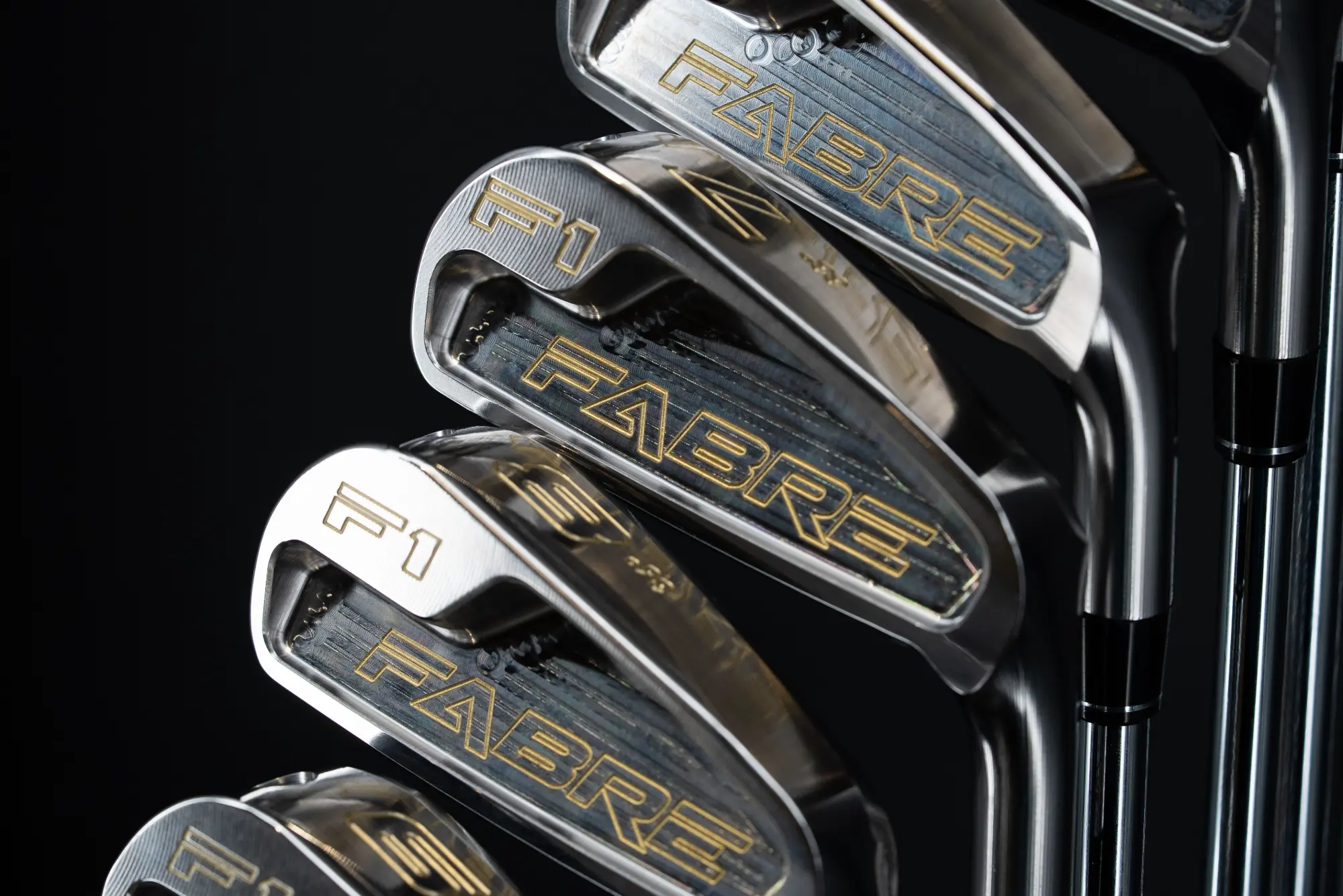About Fabre

Our Clubs
A premium CNC-machined golf club head offers several advantages over traditionally manufactured heads, particularly in terms of precision, consistency, and performance.
Manufacturing Process
CNC milling involves cutting a solid block of metal with computer-guided tools to achieve the desired shape and intricate details. The design is programmed into the computer, which then precisely controls the machinery to mill the club head to within thousandths of an inch. This contrasts with traditional methods like casting, where molten metal is poured into a mold, or forging, where metal is shaped under intense pressure and heat. These processes come with inherit drawbacks and inconsistent dimensional stability, which include residual internal stresses during cooling. Compromises in the final shape must be made to allow manual bending of the final club head. This results in adding to internal stresses, which can relieve over time, causing changes to both the loft and lie angles. CNC machining provides greater precision and detail compared to these other methods.
In essence, a CNC-machined premium golf club head is a product of precision engineering, utilizing advanced manufacturing techniques to deliver superior performance, feel, and customization options for golfers seeking a competitive edge on the course. While they may be more expensive than clubs made through traditional methods, the performance benefits are often considered a worthwhile investment for serious golfers.

Key Characteristics and Benefits
- Superior Precision and Consistency: CNC milling, a computer-controlled process, allows for the creation of intricate designs with exceptionally tight tolerances. This means each club head is crafted to the exact specifications, ensuring consistent performance from one club to another, which is a major factor in improving control and accuracy.
- Enhanced Feel and Feedback: The meticulous milling process results in a distinctive feel at impact, providing golfers with instant feedback on their stroke. This feedback can help golfers refine their technique and achieve a more consistent stroke and ball control.
- Optimal Weight Distribution: CNC milling facilitates precise weight distribution within the club head, contributing to a more balanced and stable stroke. This reduces the likelihood of the club head twisting during the swing, leading to a smoother roll of the ball off the club head.
- Customization Options: CNC technology enables intricate designs and extensive customization options. Golfers can select from a variety of lie angles, face finishes, swing weights, and engravings to personalize their clubs and match their individual style and preferences.
- Precise Face Milling Patterns: CNC milled irons feature specifically designed face milling patterns and precision milled grooves. These patterns and groove shapes are engineered to optimize the roll and feel of the ball upon impact, offering unparallel levels of friction and consistency, which have been refined to provide a performance that has not been seen in the golf world.
- Premium Craftsmanship and Durability: CNC milled club heads are associated with high-quality craftsmanship and meticulous attention to detail. They are also known for their durability, and are crafted from a proprietary grade of Aerospace stainless steel.
More About Customizing Your Club
Getting the correct swing weight on a golf club iron is important because it significantly impacts how the club feels during your swing and can therefore affect your performance in several key areas. Having a swing weight that is adjustable is key to obtaining the critical balance that is so important to improving your game play.
Here's why swing weight is important:
- Feel and Feedback: Swing weight measures how heavy the club feels when you swing it, not its overall weight. This "feel" is subjective and influences your control and accuracy.
- Swing Speed: A lower swing weight (lighter feel) can help generate more clubhead speed, potentially increasing distance. However, a heavier swing weight may improve momentum, leading to more control.
- Consistency: Matching the swing weight of clubs in a set promotes a consistent feel, aiding in a more repeatable and dependable swing.
- Control and Accuracy: A swing weight that feels too heavy or too light can disrupt your tempo and rhythm, hindering accurate ball striking. Some players prefer a slightly higher swing weight for enhanced control.
- Personal Preference: The optimal swing weight depends on your unique swing style, strength, and stamina.
In essence, swing weight is a key factor in achieving a balanced swing and maximizing your performance on the course. However, it's also worth noting:
- Some golfers may not be as sensitive to minor changes in swing weight as they might think, and total club weight can also be very influential.
- Swing weight is one aspect of club fitting, and the ideal swing weight is determined during a fitting session, considering factors like shaft weight, length, and grip.
- While swing weight matching across a set of irons is common for consistency, alternative approaches like Moment of Inertia (MOI) matching exist and can be beneficial for optimizing performance.


